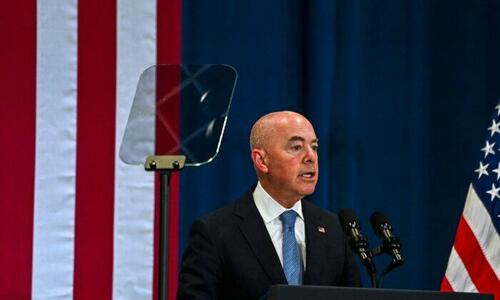Today, a unanimous three-judge panel of the U.S. Court of Appeals for the Eleventh Circuit concluded that the District Court Judge Aileen Cannon never had jurisdiction to block the federal government’s access to documents seized at Mar-a-Lago or to appoint a special master to oversee document review. This outcome is not a surprise. The Eleventh CIrcuit previously stayed one of Judge Cannon’s orders after which the Supreme Court refused to intervene. The oral argument also made the weakness of Trump’s case crystal clear.
The relatively brief per curiam opinion in Trump v. United States, on behalf of Chief Judge Pryor and Judges Grant and Brasher, is direct and to-the-point, and should put an end to Trump’s efforts to obstruct the federal government’s investigation of his retention and alleged mishandling of classified documents and other materials that belong to the federal government.
The opinion begins:
This appeal requires us to consider whether the district court had jurisdiction to block the United States from using lawfully seized records in a criminal investigation. The answer is no. . . .
Exercises of equitable jurisdiction—which the district court invoked here—should be “exceptional” and “anomalous.” Hunsucker v. Phinney, 497 F.2d
29, 32 (5th Cir. 1974).1 Our precedents have limited this jurisdiction with a four-factor test. Richey v. Smith, 515 F.2d 1239, 1243–44 (5th Cir. 1975). Plaintiff’s jurisdictional arguments fail all four factors.In considering these arguments, we are faced with a choice: apply our usual test; drastically expand the availability of equitable jurisdiction for every subject of a search warrant; or carve out an unprecedented exception in our law for former presidents. We choose the first option. So the case must be dismissed.
The Court did not think much of the former President’s arguments.
Only the narrowest of circumstances permit a district court to invoke equitable jurisdiction. Such decisions “must be exercised with caution and restraint,” as equitable jurisdiction is appropriate only in “exceptional cases where equity demands intervention.” In re $67,470, 901 F.2d 1540, 1544 (11th Cir. 1990); see also Hunsucker, 497 F.2d at 32. This is not one of them. . . .
When we examine Plaintiff’s arguments about the Richey factors, we notice a recurring theme. He makes arguments that—if consistently applied—would allow any subject of a search warrant to invoke a federal court’s equitable jurisdiction. That understanding of Richey would make equitable jurisdiction not extraordinary, “but instead quite ordinary.” United States v. Search of Law Office, Residence, and Storage Unit Alan Brown, 341 F.3d 404, 415 (5th Cir. 2003) (quotation omitted). Our precedents consistently reject this approach. We have emphasized again and again that equitable jurisdiction exists only in response to the most callous disregard of constitutional rights, and even then only if other factors make it clear that judicial oversight is absolutely necessary. . . .
Plaintiff’s alternative framing of his grievance is that he needs a special master and an injunction to protect documents that he designated as personal under the Presidential Records Act. But as we have said, the status of a document as personal or presidential does not alter the authority of the government to seize it under a warrant supported by probable cause; search warrants authorize the seizure of personal records as a matter of course. The Department of Justice has the documents because they were seized with a search warrant, not because of their status under the Presidential Records Act. So Plaintiff’s suggestion that “whether the Government is entitled to retain some or all the seized documents has not been determined by any court” is incorrect. The magistrate judge decided that issue when approving the warrant. To the extent that the categorization of these documents has legal relevance in future proceedings, the issue can be raised at that time.
All these arguments are a sideshow. The real question that guides our analysis is this—adequate remedy for what? The answer is the same as it was in Chapman: “No weight can be assigned to this factor because [Plaintiff] did not assert that any rights had been violated, i.e., that there has been a callous disregard for his constitutional rights or that a substantial interest in property is jeopardized.” 559 F.2d at 407. If there has been no constitutional violation—much less a serious one—then there is no harm to be remediated in the first place. This factor also weighs against exercising equitable jurisdiction. . . .
Only one possible justification for equitable jurisdiction remains: that Plaintiff is a former President of the United States. It is indeed extraordinary for a warrant to be executed at the home of a former president—but not in a way that affects our legal analysis or otherwise gives the judiciary license to interfere in an ongoing investigation. The Richey test has been in place for nearly fifty years; its limits apply no matter who the government is investigating. To create a special exception here would defy our Nation’s foundational principle that our law applies “to all, without regard to numbers, wealth, or rank.” State of Georgia v. Brailsford, 3 U.S. (3 Dall.) 1, 4 (1794).
The court concludes:
The law is clear. We cannot write a rule that allows any subject of a search warrant to block government investigations after the execution of the warrant. Nor can we write a rule that allows only former presidents to do so. Either approach would be a radical reordering of our caselaw limiting the federal courts’ involvement in criminal investigations. And both would violate bedrock separation-of-powers limitations. Accordingly, we agree with the government that the district court improperly exercised equitable jurisdiction, and that dismissal of the entire proceeding is required.
The district court improperly exercised equitable jurisdiction in this case. For that reason, we VACATE the September 5 order on appeal and REMAND with instructions for the district court to DISMISS the underlying civil action.
The post Eleventh Circuit Quashes Trump Effort to Block Federal Government Access to Mar-a-Lago Documents appeared first on Reason.com.
from Latest https://ift.tt/Sfx75Al
via IFTTT















